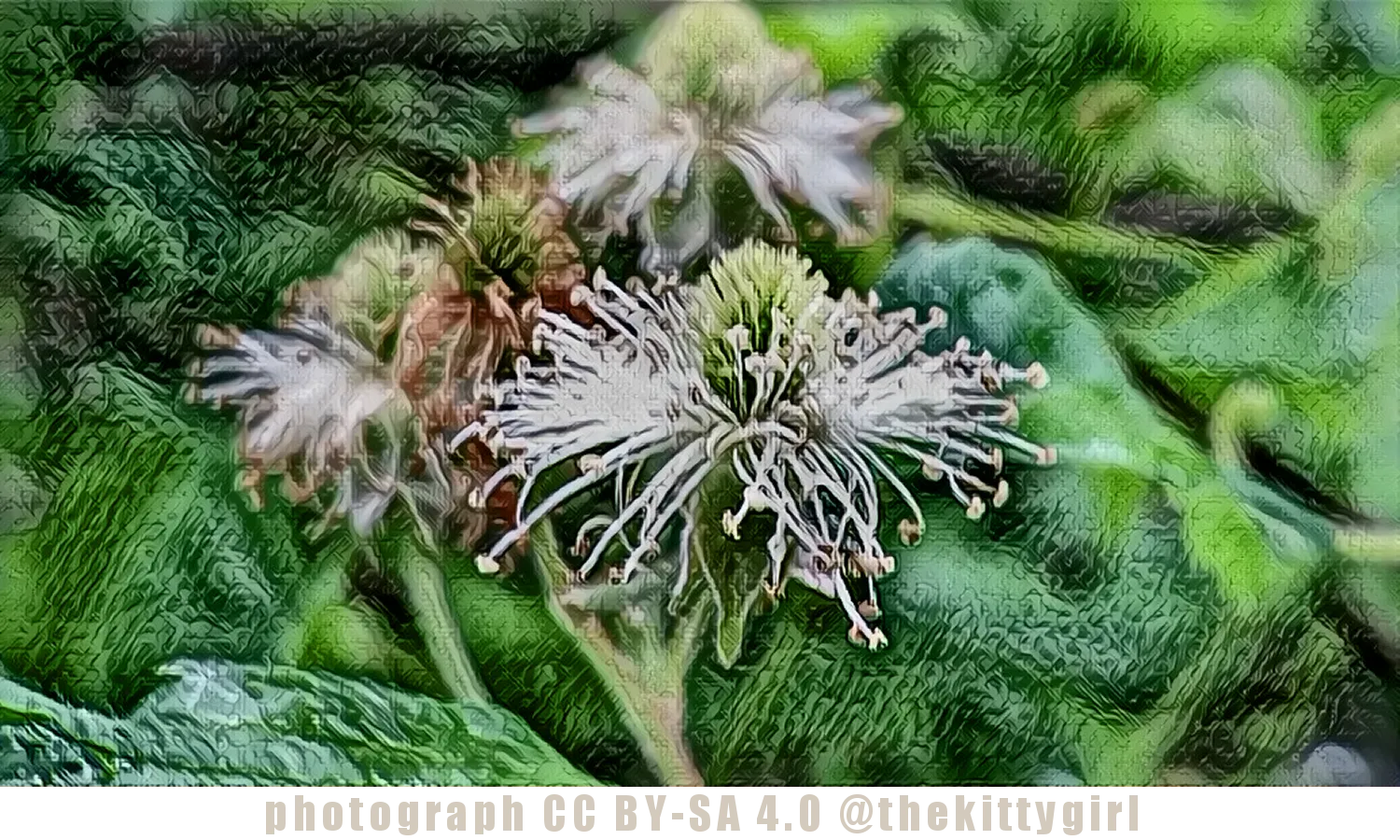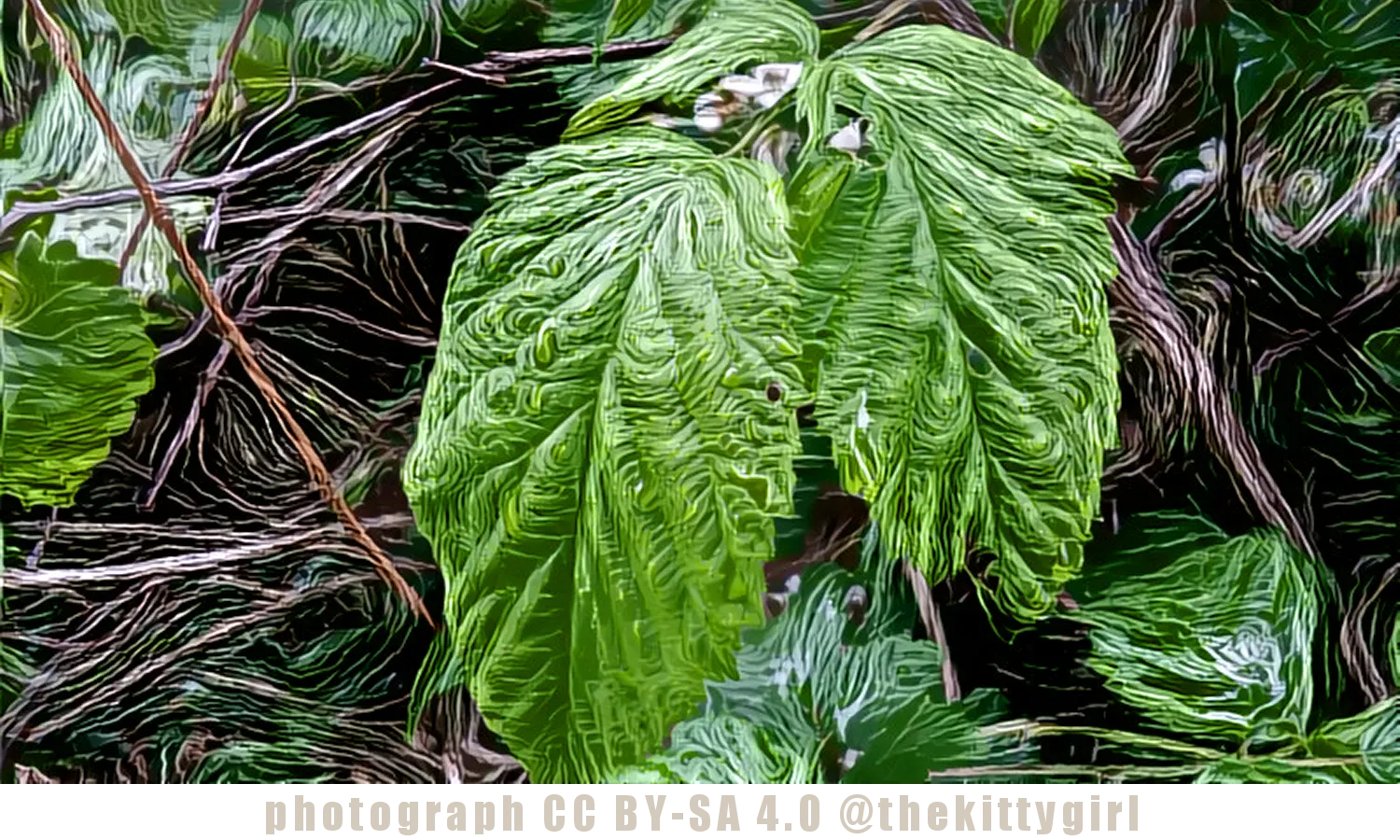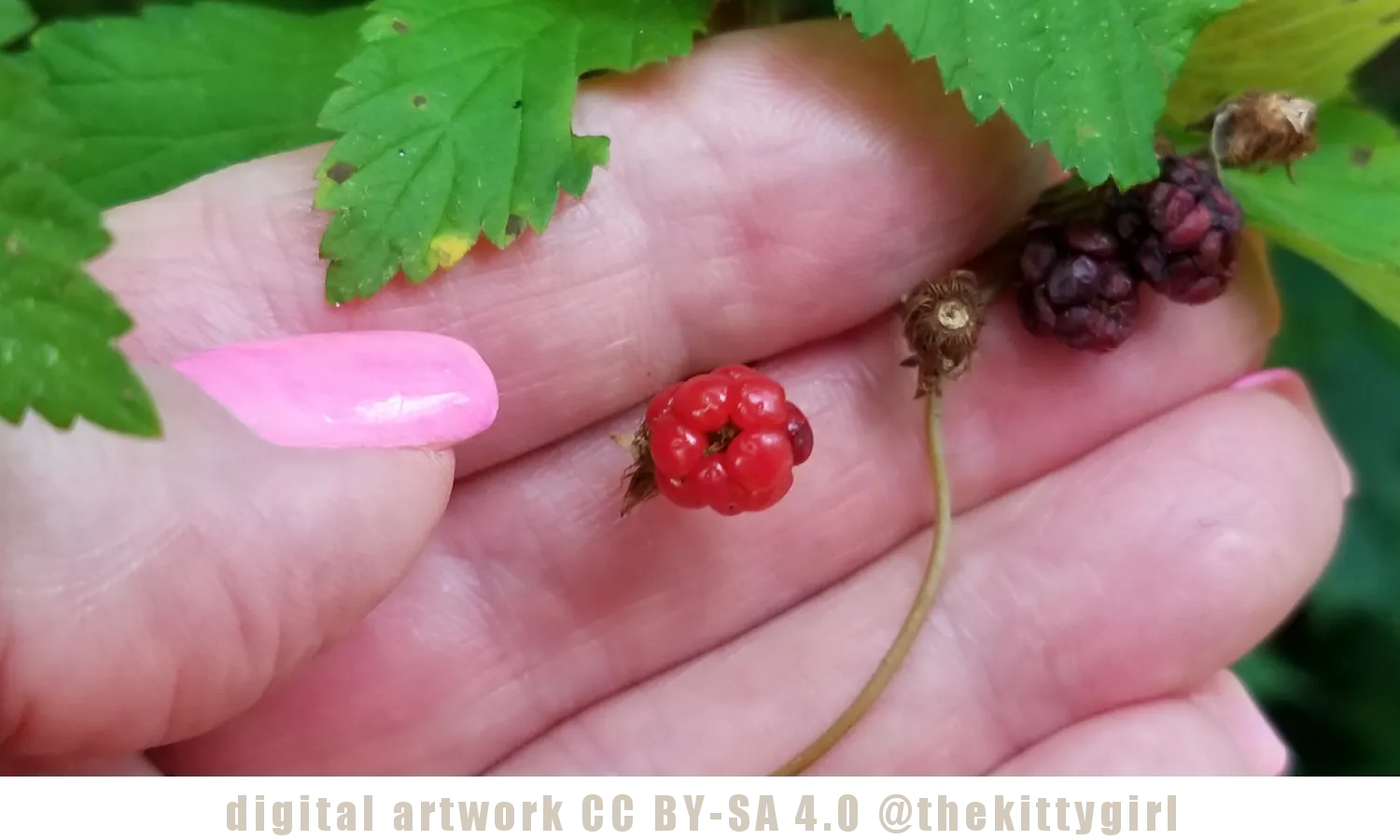I was rather excited when I realized some blackberry vines were growing on the property! They had not been planted, so they must have been spread by birds eating berries somewhere nearby and pooping the seeds at the edge of my row of Forsythia ("Yellow Bell") bushes.

These flowers bloomed late in April and the berries began forming soon after, slowly growing into bunches of little red druplets. Each little "bump" on the blackberry fruit is called a "druplet." The flowers are quite pretty with a mass of feathery pistils in the center of five white petals.

The edges of the leaves are serrated. When the plants first started coming up, the asymmetry of some of the leaves made me worry that it was poison ivy 😱 but the little thorns on the stalks made me realize otherwise. You can see the asymmetry I mentioned in the leaf on the right in the following photo:

The disappointing thing about the blackberries produced by these vines this year is their small size. I have actually seen many a blueberry that is larger than these blackberries! 😳

The berries on this bush are incredibly small. In fact, I have never seen such small fruit on a blackberry vine in my life. I remember picking blackberries as a child with my aunt that were the size of small grapes! I did some research online about this and the University of Arkansas' Division of Agriculture offers a quite plausible explanation. Regarding the formation of druplets, they begin with this:
Poor druplet formation can arise due to poor pollination of flowers. Pollen is produced in the stamens of the flower and must be moved to the pistils to fertilize the ovules, which will result in the druplet. If the pistil is not fertilized no druplet will form. Blackberry flowers have 100-125 pistils of which 75-85 must be fertilized to get a good sized and shaped berry.
They go on to say that bees, which are important for pollination of blackberries, are not so active if cool, cloudy, or wet weather occurs during the flowering of the vines. It certainly was not cool this year during that time, but we did have a good bit of rain, and that rain might have contributed to the flowers not being properly pollinated.
Despite the berries being very few and very small, they are tasty. I've only gotten three or four berries so far, and maybe another half-dozen will be ready soon. There certainly won't be any blackberry pies or preserves from them. 😕
For anyone interested in a traditional dessert made frequently in the southern US, see my recipe for making a Fruit Cobbler, which can be made from blackberries, blueberries, apples, peaches, or most any other fruit or berry! 😋
SOURCES 1 University of Arkansas, Division of Agriculture: "What is Going on with my Blackberry Fruit?" 2 Wikipedia: Blackberry





to learn more about either of these projects, please visit: @heyhaveyamet or @theterminal
16-Jul-2020
Return from Blackberry to 𝕜𝕚𝕥𝕥𝕪's Web3 Blog

